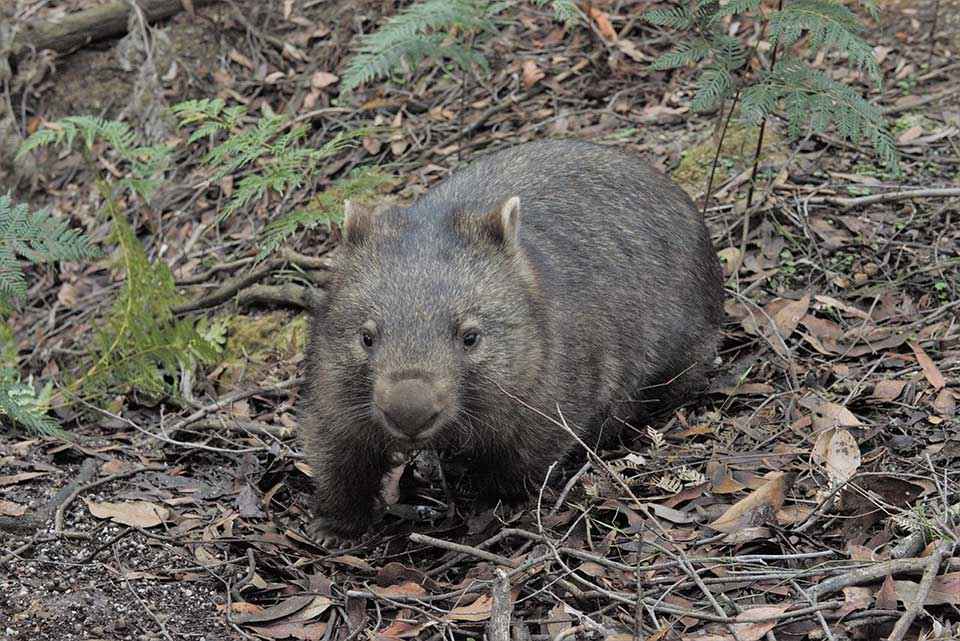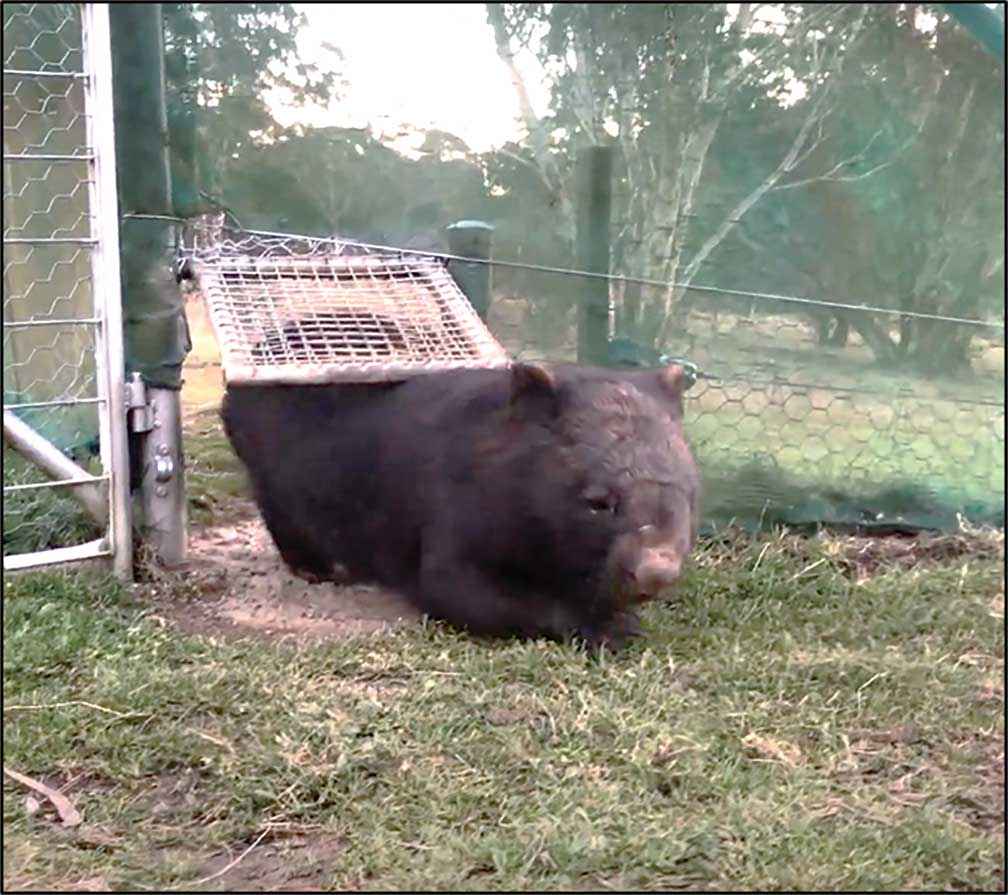Victorian Landcare Magazine - Summer 2022 , Issue 83

Wombats are among the largest burrowing mammals in the world. The earliest fossil records of wombats date back to about 20 million years ago.
The bare-nosed wombat was once widespread throughout southern Australia and is now only found in parts of eastern NSW, Victoria, south-eastern SA and Tasmania. It is one of three species of wombat which includes the northern-hairy-nosed wombat which is listed as endangered with its habitat restricted to only two sites in central Queensland, and the southern hairy-nosed wombat which is considered near threatened with a fragmented and declining population across semi-arid parts of SA and across the Nullarbor Plain into WA.
When establishing their burrows wombats can dig under thick layers of very hard soils called calcrete. Their digging improves water infiltration which increases soil moisture. Digging by wombats provides sites for water to enter soil, and also creates habitat for other species.
Wombats are herbivores that graze on grasses and herbaceous plants rather than shrubs or trees.
We need to allow wombats to move freely through their home territory.
Unfortunately, they are often blamed for the damage done by other grazing animals.
Affectionally known as the bulldozers of the bush, wombats are powerful and determined animals that may sometimes build their burrows under houses, along driveways or along domestic stock routes. This can result in inconvenience and conflict between wombats and people. It is important to understand wombat behaviour so we can learn to live with them.
Wombats construct burrows to escape the heat and hide from predators. They prefer areas where it is easy to dig. A single wombat may occupy three or four burrows. These can be shared with other wombats but not usually at the same time. Depending on the location, wombats will use existing burrows in preference to digging a fresh one.
Many of the problems caused by wombats can be resolved with patience and innovation. Concerns over stock injuries or damage to farm machinery when hitting or falling down a wombat burrow can be addressed with fencing. A post or low strand wire fence to mark burrows in paddocks or driveways will keep stock away. Electric fencing at 30 centimetres above the ground will allow the wombats to pass under but keep the stock away. Using old pallets to mark burrows and stop stock from getting too close has also been successful.
Wombats are creatures of habit and use the same trails to get to and from their preferred feeding areas. Instead of going around an obstacle, such as a fence, a determined wombat will try to go through, or under it. This is when the conflict starts. The landowner repairs the fence, and the wombat makes an alternate hole to enter or exit and so the process continues.
Removing the lowest fencing wire (15 centimetres above ground level) may allow wombats to move through an area without damaging the fence. This can be a much cheaper option than excluding them completely.

Above: A wombat swing gate can prevent damage to fences. Gates with mange treatment containers have also been developed.
CSIRO researchers have found installing wombat gates can reduce fence damage and most importantly, wombats will use them. The Wombat Protection Society of Australia (WPSA) approached the Berwick Men’s Shed and with their assistance have developed a prototype free-swinging gate allowing access in both directions.
The gates are also fitted with a mange treatment container that can be utilised, if needed. Mange, caused by an infestation of the mange mite Sarcoptes scabei is a serious threat to wombats, who may die without treatment. Sick wombats can be reported to the WPSA.
Installing wombat swing gates at known wombat breech points along a fence will allow them to pass through without causing damage, so the fence will continue to exclude larger animals.
Evidence shows echidnas will also use the wombat gates. The gate needs to be installed after initial damage to the fence as this is the only way to know the animal’s preferred route.
WPSA are trialling wombat swing gates. Gates will be available at no cost to eligible landholders on the condition they are prepared to give feedback on the success of the gates. This will enable improvements to be made if necessary. It will be the landowner’s responsibility to install the gates which have been designed to fit into most existing ring lock and exclusion fencing. The trial is supported by the Victorian Government through a Community Support Fund grant.
Wombats can be excluded from burrows under a building by erecting a one-way sturdy door that allows the animal to leave, but not return. This method can also be used when evicting a wombat from a wombat hole in a dam wall. More information on this is available on the WPSA website.
The trapping and relocation of wombats is not permitted. Wombats are territorial animals. If relocated, they are likely to be harassed and attacked by resident wombats or killed on the road or by dogs as they try to find their way home.
Learning to live with wombats has many benefits for the species and for biodiversity. Being aware of the needs of wombats means paying attention to the pressures of land clearing and the impacts of disasters such as drought, bushfires, and flooding on these precious creatures.
Jenny Mattingley has been a wildlife carer in West Gippsland for more than 30 years. She is Victorian representative for the WPSA.
For more information or to be part of the free wombat gate trial email info@wombatprotection.org.au